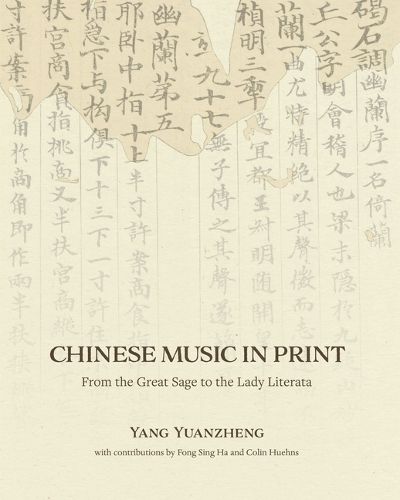Readings Newsletter
Become a Readings Member to make your shopping experience even easier.
Sign in or sign up for free!
You’re not far away from qualifying for FREE standard shipping within Australia
You’ve qualified for FREE standard shipping within Australia
The cart is loading…






A collection of rare musical artifacts from the University of Hong Kong's Fung Ping Shan Library. Chinese Music in Print is grounded in a desire to move rare items from the University of Hong Kong's Fung Ping Shan Library from the world of music and into a context of books and images in American, British, and other Asian collections. This book views the library as a repository not of information but of artifacts and then uses these artifacts as a means for generating a scholarly narrative. It begins by assessing seminal texts in the Confucian canon set against the delicacy of the concubine and amanuensis as reflected in Shen Cai's calligraphy and poetry. Confucianism was a crucial aspect of courtly life, and an analysis of its ritual is the book's second theme. Vernacular genres of opera and song are represented in the third chapter, while the Great Sage returns in the fourth for an exploration of the repertoire and richness of his favorite instrument, the qin. The final chapter ends the journey with a discussion of the legacy of generations of Europeans who have visited China and their contribution to the understanding of the erhu.
$9.00 standard shipping within Australia
FREE standard shipping within Australia for orders over $100.00
Express & International shipping calculated at checkout
A collection of rare musical artifacts from the University of Hong Kong's Fung Ping Shan Library. Chinese Music in Print is grounded in a desire to move rare items from the University of Hong Kong's Fung Ping Shan Library from the world of music and into a context of books and images in American, British, and other Asian collections. This book views the library as a repository not of information but of artifacts and then uses these artifacts as a means for generating a scholarly narrative. It begins by assessing seminal texts in the Confucian canon set against the delicacy of the concubine and amanuensis as reflected in Shen Cai's calligraphy and poetry. Confucianism was a crucial aspect of courtly life, and an analysis of its ritual is the book's second theme. Vernacular genres of opera and song are represented in the third chapter, while the Great Sage returns in the fourth for an exploration of the repertoire and richness of his favorite instrument, the qin. The final chapter ends the journey with a discussion of the legacy of generations of Europeans who have visited China and their contribution to the understanding of the erhu.